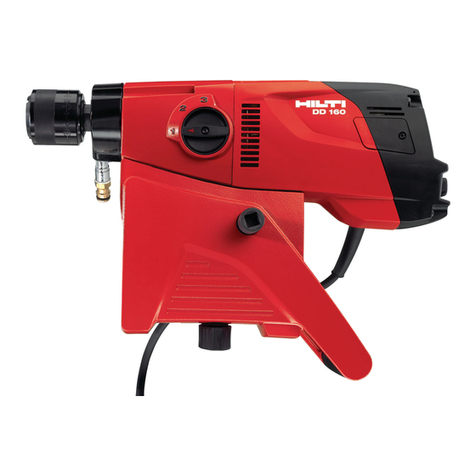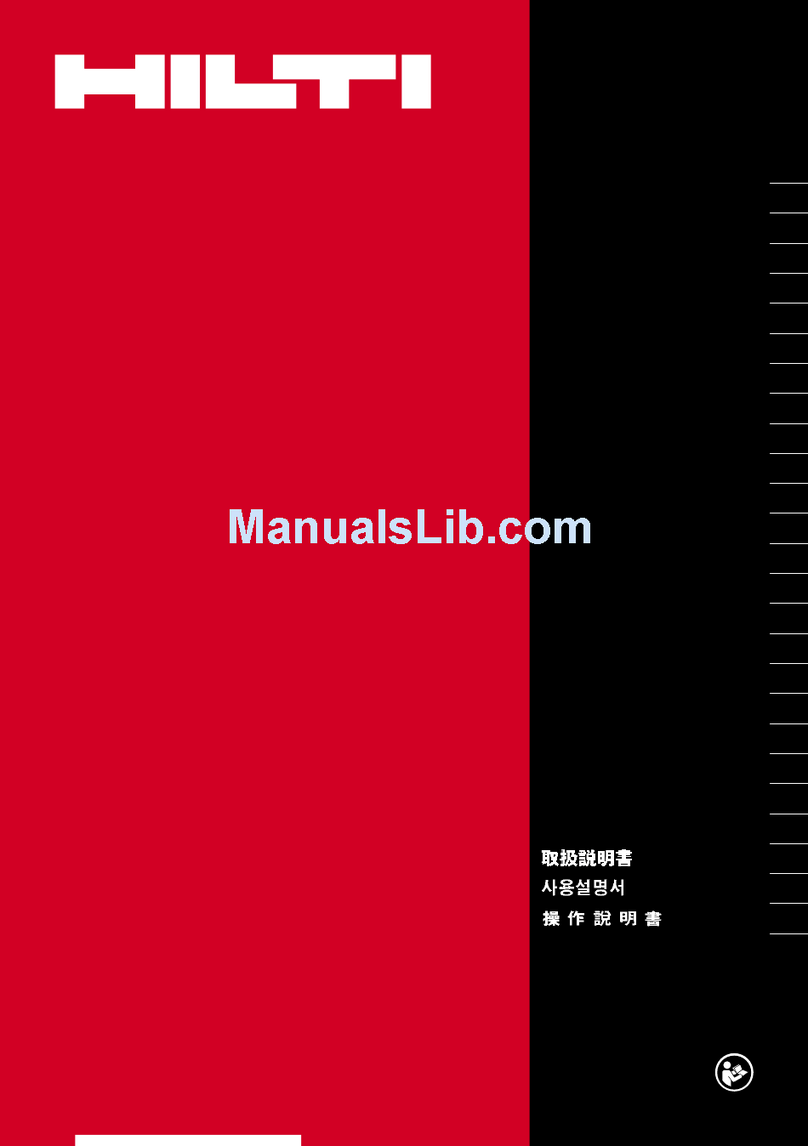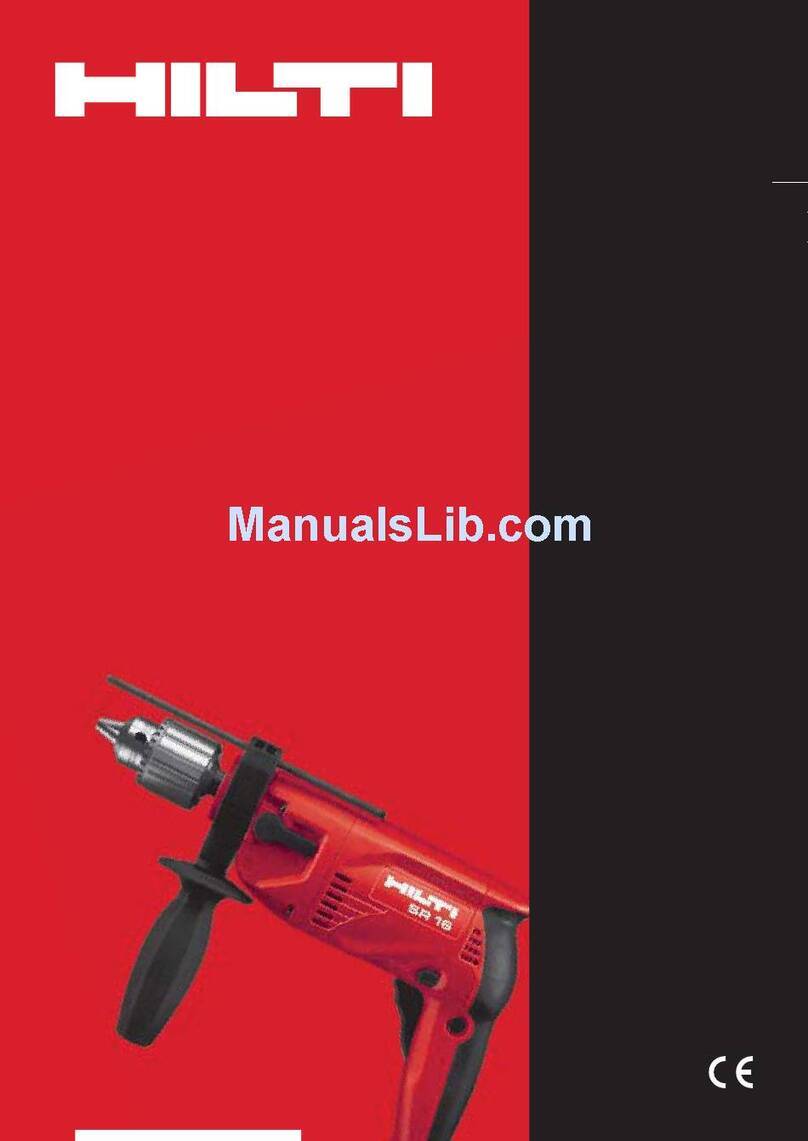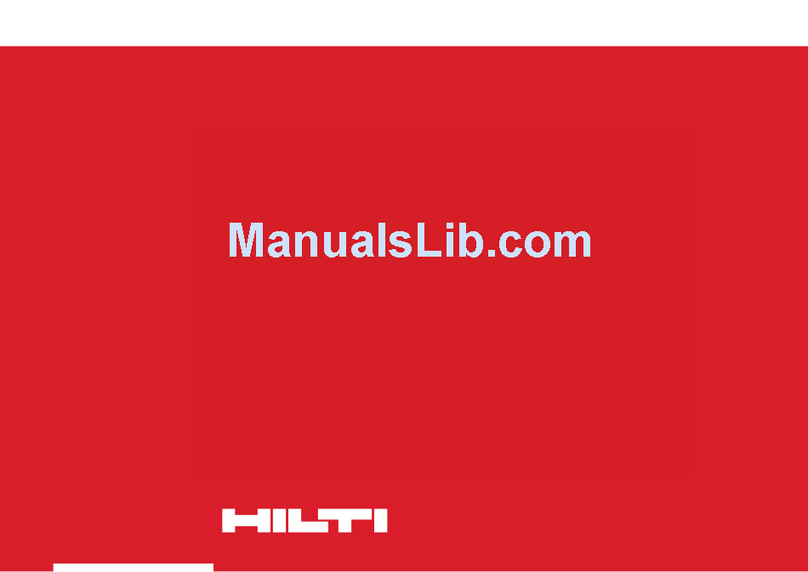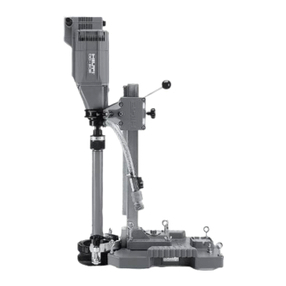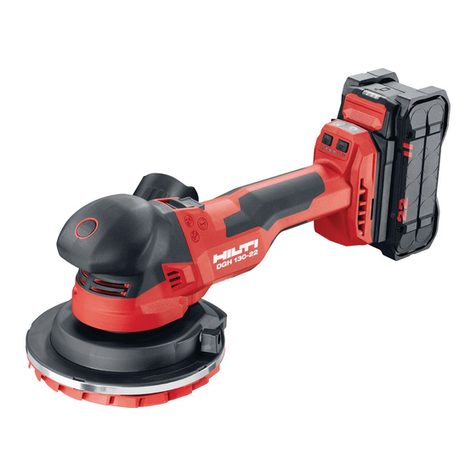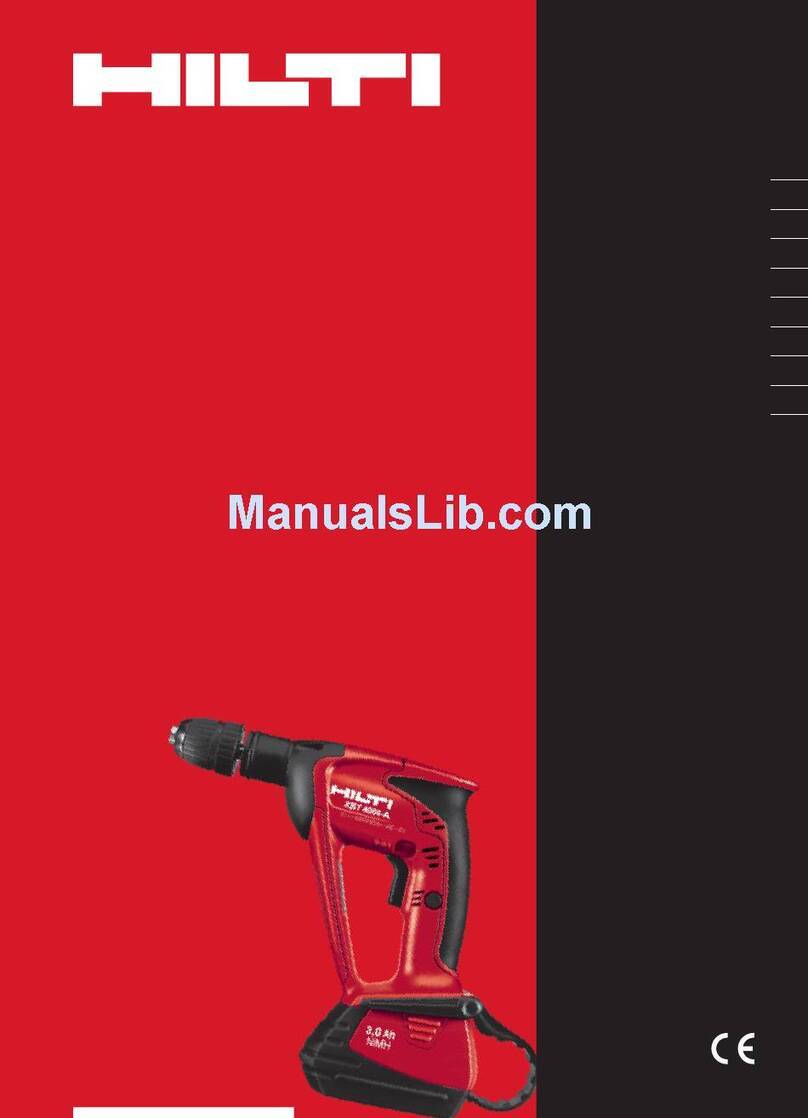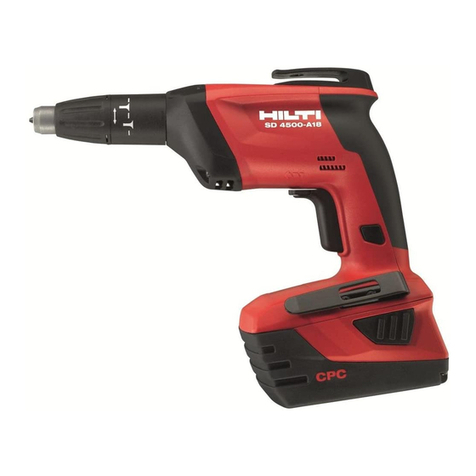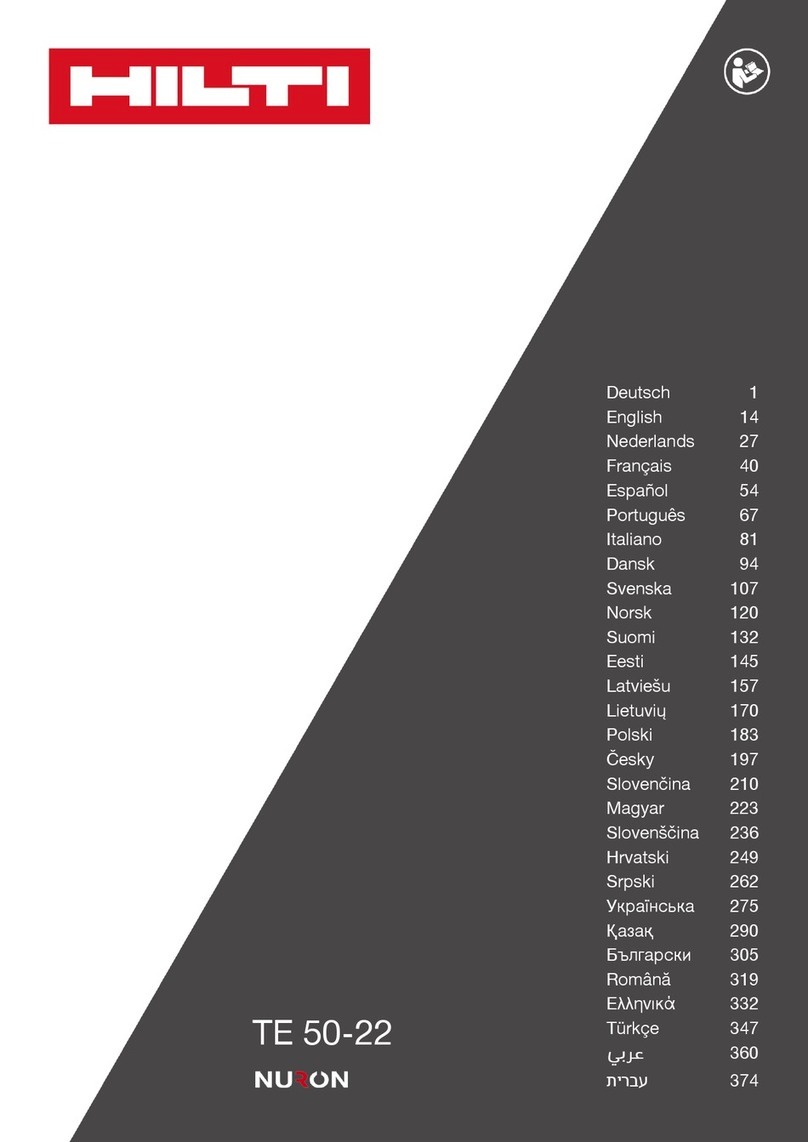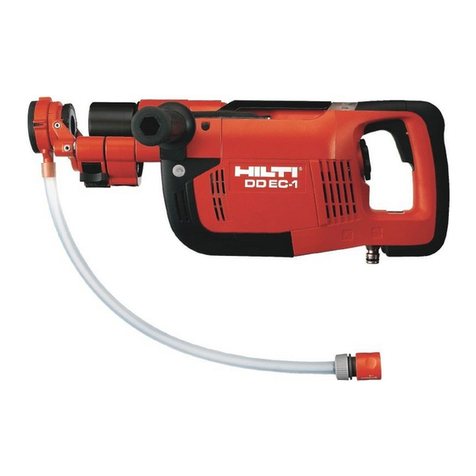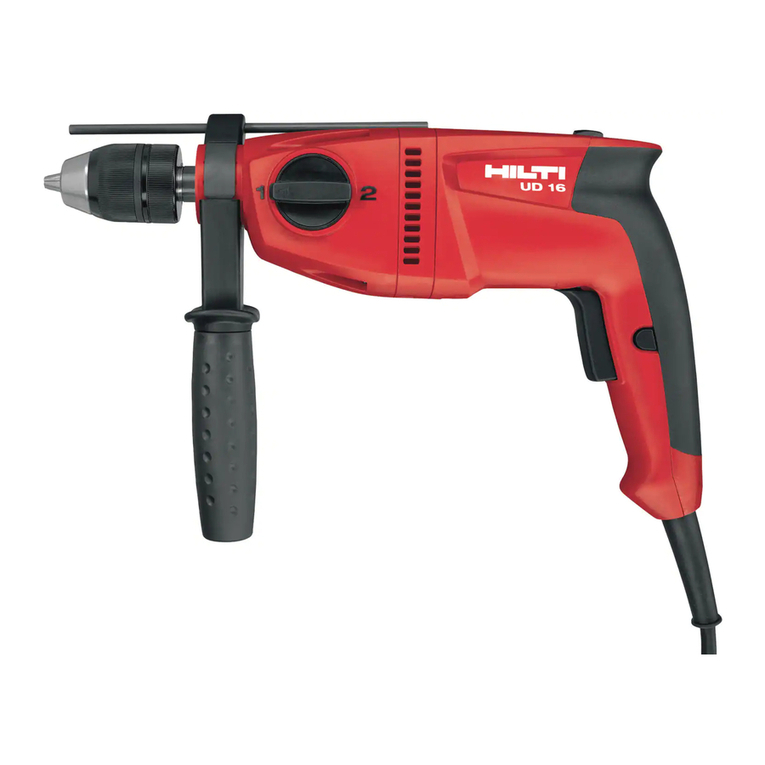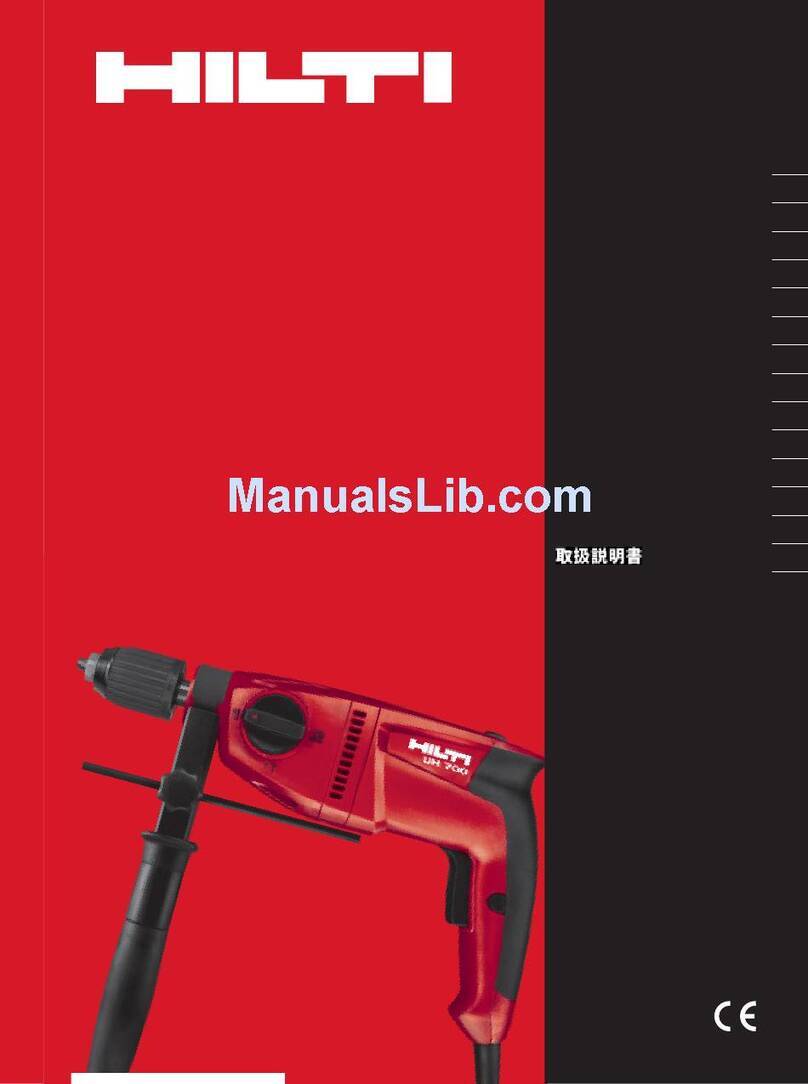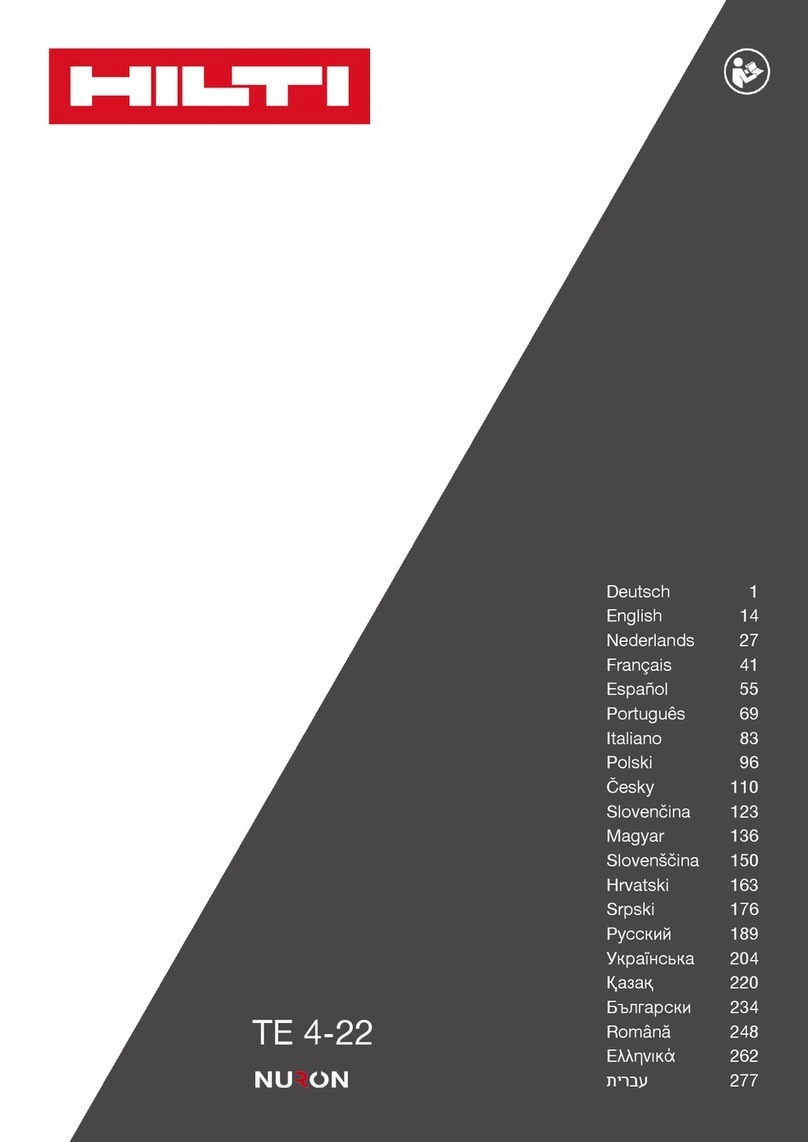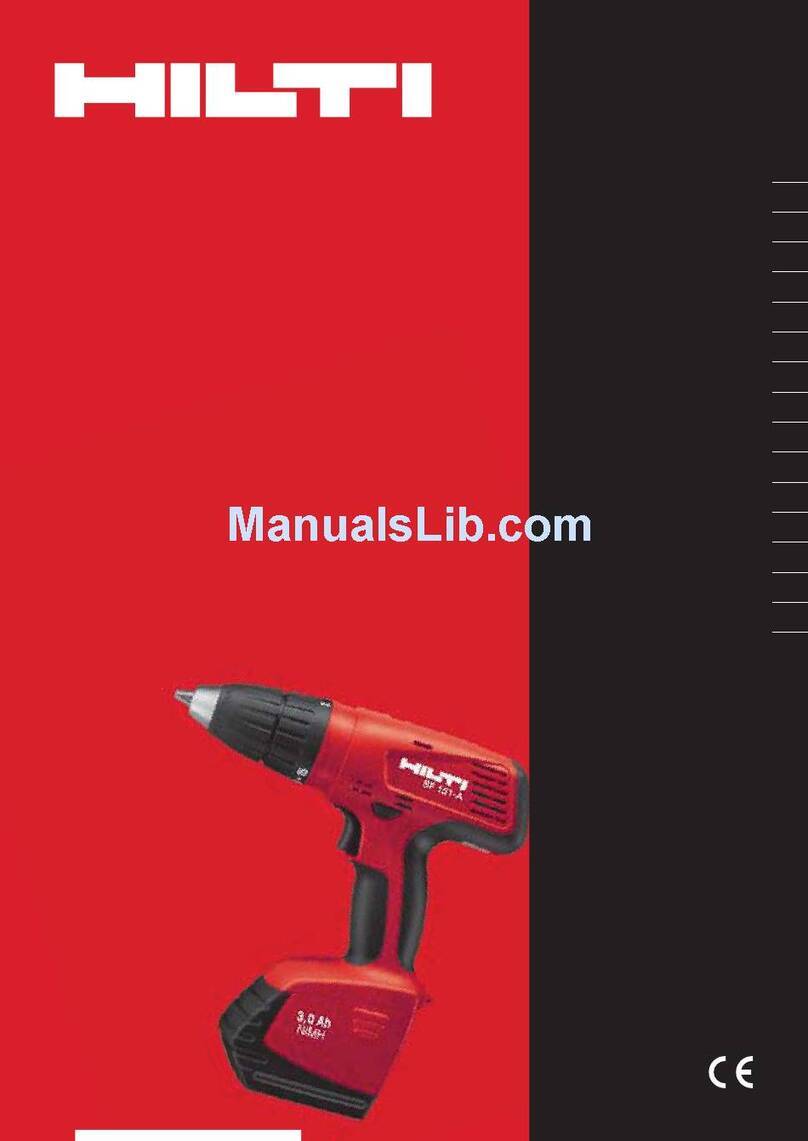
any other condition that may affect the power
tool’s operation. If damaged, have the power tool
repaired before use. Many accidents are caused by
poorly maintained power tools.
f) Keep cutting tools sharp and clean. Properly main-
tained cutting tools with sharp cutting edges are less
likely to bind and are easier to control.
g) Use the power tool, accessories and tool bits etc.
in accordance with these instructions taking into
account the working conditions and the work to
be performed. Use of the power tool for opera-
tions different from those intended could result in a
hazardous situation.
5.1.5 Service
a) Have your power tool serviced by a qualified repair
person using only identical replacement parts.
This will ensure that the safety of the power tool is
maintained.
5.2 Hammer safety warnings
a) Wear ear protectors. Exposure to noise can cause
hearing loss.
b) Use auxiliary handles, if supplied with the tool.
Loss of control can cause personal injury.
c) Hold power tool by insulated gripping surfaces,
when performing an operation where the cutting
accessory may contact hidden wiring or its own
cord. Cutting accessory contacting a "live" wire may
make exposed metal parts of the power tool "live"
and could give the operator an electric shock.
5.3 Additional safety instructions
5.3.1 Personal safety
a) Always hold the power tool securely with both
hands on the grips provided. Keep the grips dry,
clean and free from oil and grease.
b) Breathing protection must be worn if the power
tool is used without a dust removal system for
work that creates dust.
c) Improve the blood circulation in your fingers by
relaxing your hands and exercising your fingers
during breaks between working.
d) Avoid touching rotating parts. Switch the power
tool on only after bringing it into position at the
workpiece. Touching rotating parts, especially rotat-
ing insert tools, may lead to injury.
e) Always lead the supply cord and extension cord
away from the power tool to the rear while work-
ing. This helps to avoid tripping over the cord while
working.
f) Children must be instructed not to play with the
power tool.
g) The power tool is not intended for use by children,
by debilitated persons or those who have received
no instruction or training.
h) When using the power tool for mixing, set the
function selector switch to “Hammer drilling” and
wear protective gloves.
5.3.2 Power tool use and care
a) Secure the workpiece. Use clamps or a vice to
secure the workpiece. The workpiece is thus held
more securely than by hand and both hands remain
free to operate the power tool.
b) Check that the insert tools used are compatible
with the chuck system and that they are secured
in the chuck correctly.
c) Always work from a secure, safe stance.
5.3.3 Electrical safety
a) Before beginning work, check the working area
(e.g. using a metal detector) to ensure that no
concealed electric cables or gas and water pipes
are present. External metal parts of the power tool
may become live, for example, when an electric cable
is damaged accidentally. This presents a serious risk
of electric shock.
b) Check the power tool’s supply cord at regular
intervals and have it replaced by a qualified spe-
cialist if found to be damaged. If the power tool’s
supply cord is damaged it must be replaced with
a specially-prepared supply cord available from
Hilti Customer Service. Check extension cords
at regular intervals and replace them if found to
be damaged. Do not touch the supply cord or
extension cord if it is damaged while working.
Disconnect the supply cord plug from the power
outlet. Damaged supply cords or extension cords
present a risk of electric shock.
c) Dirty or dusty power tools which have been used
frequently for work on conductive materials
should be checked at regular intervals at a Hilti
Service Center. Under unfavorable circumstances,
dampness or dust adhering to the surface of
the power tool, especially dust from conductive
materials, may present a risk of electric shock.
d) When working outdoors with an electric tool
check to ensure that the tool is connected to the
electric supply by way of a ground fault circuit
interrupter (GFCI) with a rating of max. 30 mA
(tripping current). Use of a ground fault circuit
interrupter reduces the risk of electric shock.
e) Use of a ground fault circuit interrupter (GFCI)
with a maximum tripping current of 30 mA is
recommended.
5.3.4 Work area
a) Ensure that the workplace is well lit.
b) Ensure that the workplace is well ventilated. Ex-
posure to dust at a poorly ventilated workplace may
result in damage to the health.
c) WARNING: Some dust created by grinding, sand-
ing, cutting and drilling contains chemicals known
to cause cancer, birth defects, infertility or other
en
6
Printed: 08.07.2013 | Doc-Nr: PUB / 5071145 / 000 / 02
